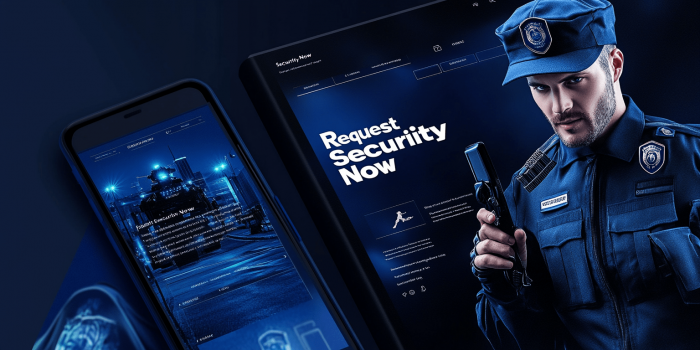Even the most high-quality and functional website requires regular attention. Its importance is hard to overstate, as it affects several critical areas at once – from SEO and security to user experience and audience trust. Nevertheless, many owners continue to ignore systematic maintenance, not considering the risks that come with its absence. That’s why we’ll take a closer look at why it’s important to regularly update your website and try to clarify how exactly to do it and what to focus on first.

How regular updates affect SEO and search visibility
Websites that remain unchanged for a long time gradually lose their competitiveness in search results. Google’s algorithms constantly adapt to new user behavior scenarios, and what worked a few years ago is no longer aligned with current realities. Outdated texts lack relevant semantics, the structure fails to meet usability standards, and the speed, mobile compatibility, and sitemap accuracy no longer satisfy basic requirements. We’ve already explained what website technical support is – and this is exactly where its close relationship with all these aspects becomes especially clear.
A systematic approach restores the resource’s relevance, gradually strengthening its positions in search results. Adding new pages, updating semantics, optimizing structure, fixing technical errors, and refining content create a clear signal to search engines that the site is evolving. This increases topic coverage, improves indexing, and boosts the chance of ranking for related queries. All of this leads to stable traffic that doesn’t depend on short-term changes, delivering sustainable long-term business results.
Key updates for maintaining security
When thinking about maintenance, many limit themselves to SEO and basic edits. But if you’ve decided to use a service of technical support for your site, you should also ensure its security – without it, the resource remains vulnerable. Pay special attention to:
| CMS and plugins. | Regular updates of the content management system and installed extensions eliminate vulnerabilities that hackers can use for unauthorized access or to infect the resource. |
| Access policies. | Restricting user rights and implementing a clear authorization system significantly reduces the risks of accidental changes and external interference, ensuring stable control over all actions. |
| SSL certificates. | A valid encryption certificate guarantees secure data exchange between the user and the server, positively influencing trust in the site and supporting its search engine ranking. |
| Protection from bots and attacks. | Implementing filters and restrictions for suspicious activity helps prevent deliberate attacks before they cause critical strain on the resource. |
| Backups. | Automatically creating backup versions of the website allows you to quickly restore its operation in case of failure without violating agreed deadlines for customer obligations. |
| Redirect checks. | Regular testing of redirects helps identify errors and eliminate incorrect transitions that disrupt navigation logic and interfere with proper page scanning. |
| CDN and caching. | Properly organized caching and the use of a CDN ensure fast page loading and balanced server load, which noticeably improves user experience and overall performance metrics. |
Updates and their impact on usability and trust
The appearance and functionality of a site directly affect first impressions. If a page loads slowly, the navigation is confusing, and the design looks outdated – visitors get the feeling that the company doesn’t care about service quality. Small things like stretched fonts, broken buttons, or incorrect mobile display quickly lower trust, even if the product or service is genuinely worth attention. As a result, a large portion of the audience doesn’t interact with the content – let alone take the target action.
Interface updates, adaptation to mobile scenarios, and optimization of visuals and transition logic – this kind of website redesign creates a clearer and more comfortable user experience. The user navigates content effortlessly, quickly finds the needed information, and stays on the platform longer, increasing overall engagement. A sense of brand reliability and openness gradually forms, encouraging people to reach out, submit a request, or return again. All of this is the result of regular updates, noticeable from the very first seconds of visiting the site.

Common mistakes that devalue any updates
Just like building a website from scratch requires a coordinated process, its future updating needs a systematic approach. Otherwise, even high-quality but scattered and chaotic changes only create new problems without solving existing ones. With this understanding, we work step-by-step, strictly following this sequence:
- Audit and task setting. Right after the initial consultation, we evaluate the technical foundation, structure, content, and overall condition of the site, identifying critical points and determining a general strategy for further action.
- Scope alignment and contract signing. We define the final task, discuss key interaction points in detail, and document all agreements in a contract for transparent and controllable collaboration.
- Technical implementation of changes. We introduce changes aimed at improving stability and eliminate problem areas that slow down the resource, upgrading components that no longer meet current requirements.
- Work on content and SEO. We update text blocks considering the site’s role in search results, adjust key elements, and tailor the presentation to user expectations and current queries without disrupting the overall logic.
- Pre-launch check. We conduct various tests of the updated site – evaluating performance, transition logic, session stability across different devices, and overall functional integrity.
- Publication and final review. We publish the new version, compare the completed work against the initial task, and deliver a stable, technically ready-to-use resource with a fully closed work list.
Thinking about updating your own website? Or already starting to notice problems that require expert intervention? Then don’t wait – QuatroIT web studio is ready to offer a comprehensive cooperation format, taking on resource assessment and further restoration. For every request, we consider your business specifics and stated preferences, always guaranteeing the result the owner needs. Contact us – our team will definitely help.
Questions and answers about the importance of updating your website
Why update the website if the main traffic comes from ads, not search?
Just because traffic comes from ads doesn’t mean the site’s condition doesn’t matter. If it looks outdated or works unreliably, the effectiveness of your advertising budget drops, as a portion of your audience simply won’t engage with the offer.
Is it worth updating an old site, or is it easier to create a new one?
If the structure is outdated and there are limitations even at the basic operation level, it’s better to start from scratch. But if the site’s technical foundation is stable and the needed changes mainly concern content or individual features, updating is a more efficient, faster, and more reasonable option.
How often should you check the site if active updates aren’t planned?
Ideally – every few months. This frequency helps detect technical failures, shifts in user behavior, or new external requirements in time, before they start affecting conversion or overall site stability. These checks typically cover:
- Page loading speed.
- Correct display across different devices.
- Technical code or validation errors.
- Relevance of content and contact information.
- Stability of CRM and analytics integrations.
How long does updating take, and does it interrupt the site’s operation?
Duration depends on the scope of changes – sometimes a few days are enough, while in other cases a more complex, phased approach is required. Still, the site usually remains accessible to users, and updates are carried out in the background without disrupting customer service or request processing.
Should updates be done before launching a new service or campaign?
Yes, because the website is the final link in the interaction chain after any ad or announcement. If it doesn’t reflect the new focus, isn’t prepared for changes, or looks inconsistent – part of the audience will be lost right at the transition stage, significantly lowering the campaign’s overall effectiveness.











